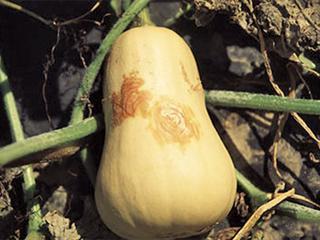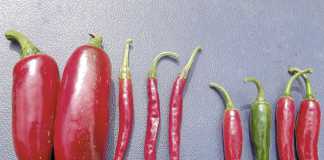
They can, however, both occur together. Both species are well- controlled by parasitic wasps (parasitoids). There are a number of species of these, and the presence or dominance of each may vary according to the season or climate.
If a farmer sprays for leaf miner, or some other pest, and thereby eliminates the wasps from the crop, the leaf miner population can get out of hand.
Insecticides
As leaf miners have many host crops, including several weeds, there is normally a balance between host and predator. The odd leaf miner survives, which ensures the wasps are kept going as well. There’s potential danger to planting a large area to a susceptible crop, especially after a cold winter; the leaf miner may start gaining a foothold before the wasp numbers are able to take control.
In such cases, the farmer may have to intervene with a product that will reduce the leaf miner population without harming the wasps. Usually, only one spray is necessary. Be aware: if you use a broad spectrum insecticide for the leaf miner, you will end up having to spray for the crop’s duration and yet are still likely to sustain some damage.
L. huidobrensis even has the capacity to kill off newly emerged seedlings by burrowing down their stems. To reiterate, always use ‘wasp-safe’ crop chemicals on any host crops. In this way, leaf miner will cease to be an ‘economical pest’.
Stem blight
Gummy stem blight is a fungal disease, known for producing irregular reddish-brown lesions on butternut fruits, a condition called black rot. It also occurs frequently in melons. Gummy stem blight can affect all parts of plants other than roots. On stems it creates cracks and lesions with a sticky, reddish gummy exudate.
On foliage it spreads from the leaf margins, creating the reddish-brown colour. Its seed is transmissible and this is the chief way it is introduced into a land. Here it can remain on crop debris for two years, so rotation is important. Fortunately, it can be combated with fungicides and by buying disease-free seed.
Ladybird beetles
Cucurbit ladybird beetles are similar to the species that attacks potatoes, beet and Swiss chard. The only real difference is that the potato ladybirds are black with orange dots, whereas the cucurbit species is orange with black dots. These should not be confused with ‘regular’ ladybirds, which eat aphids. This beneficial species is shiny, whereas the ‘vegetarians’ are a duller colour and slightly larger.
These pests eat through the leaves, leaving only veins behind, so the result looks a little like lace. However, whereas the potato ladybird can cause huge economic damage to crops, the cucurbit ladybird rarely reaches sufficient numbers to justify control measures. This is not to say it cannot happen, of course. It’s always necessary to keep an eye on the situation, but to avoid unnecessary control measures.
Cucurbit ladybirds lay their yellow eggs in clusters on the underside of leaves. The larvae develop clusters of black, branched spines. They produce the same ‘eating pattern’ on the leaves as the adults.
Contact Bill Kerr at [email protected]. Please state ‘Vegetable production’ in the subject line of your email.












